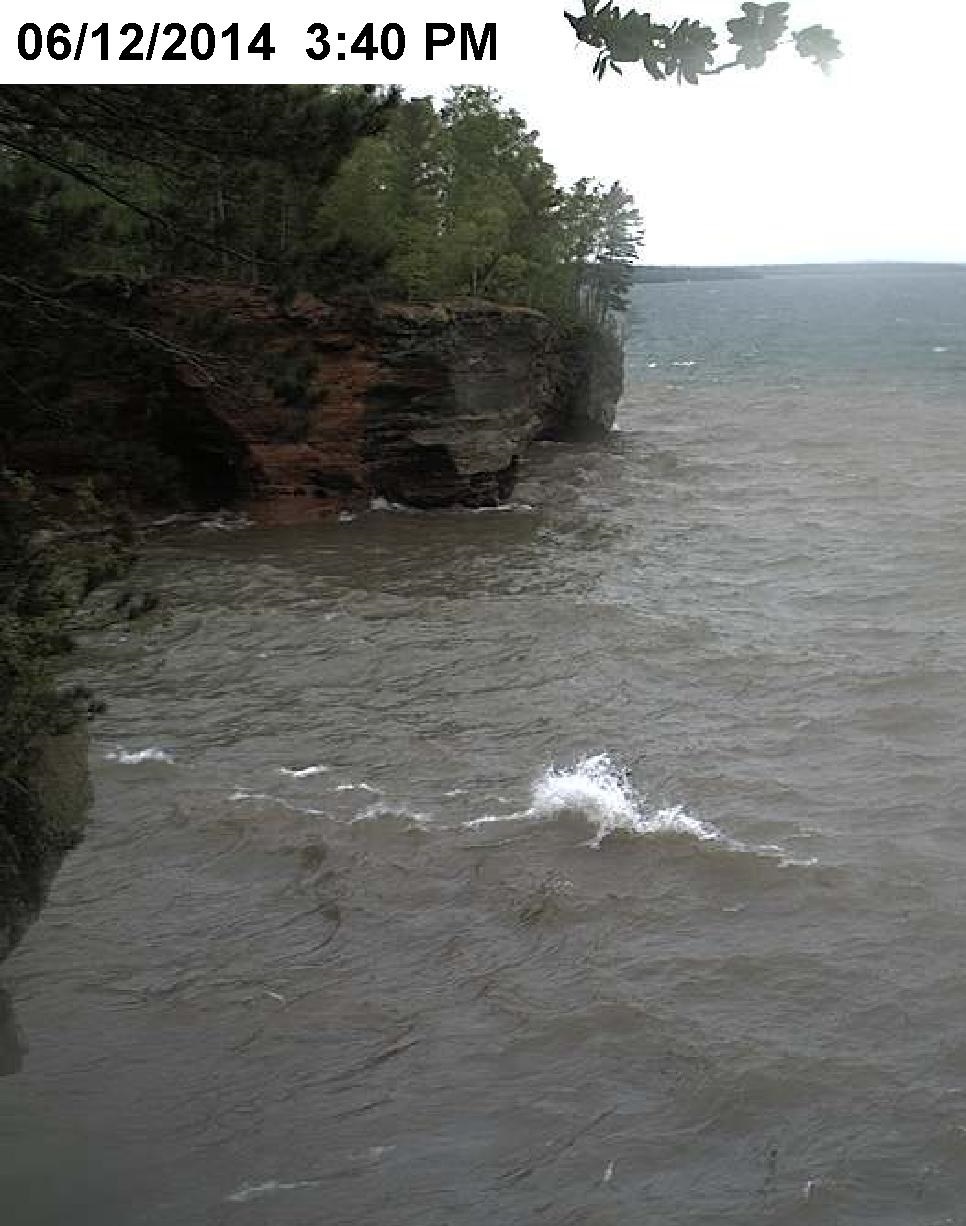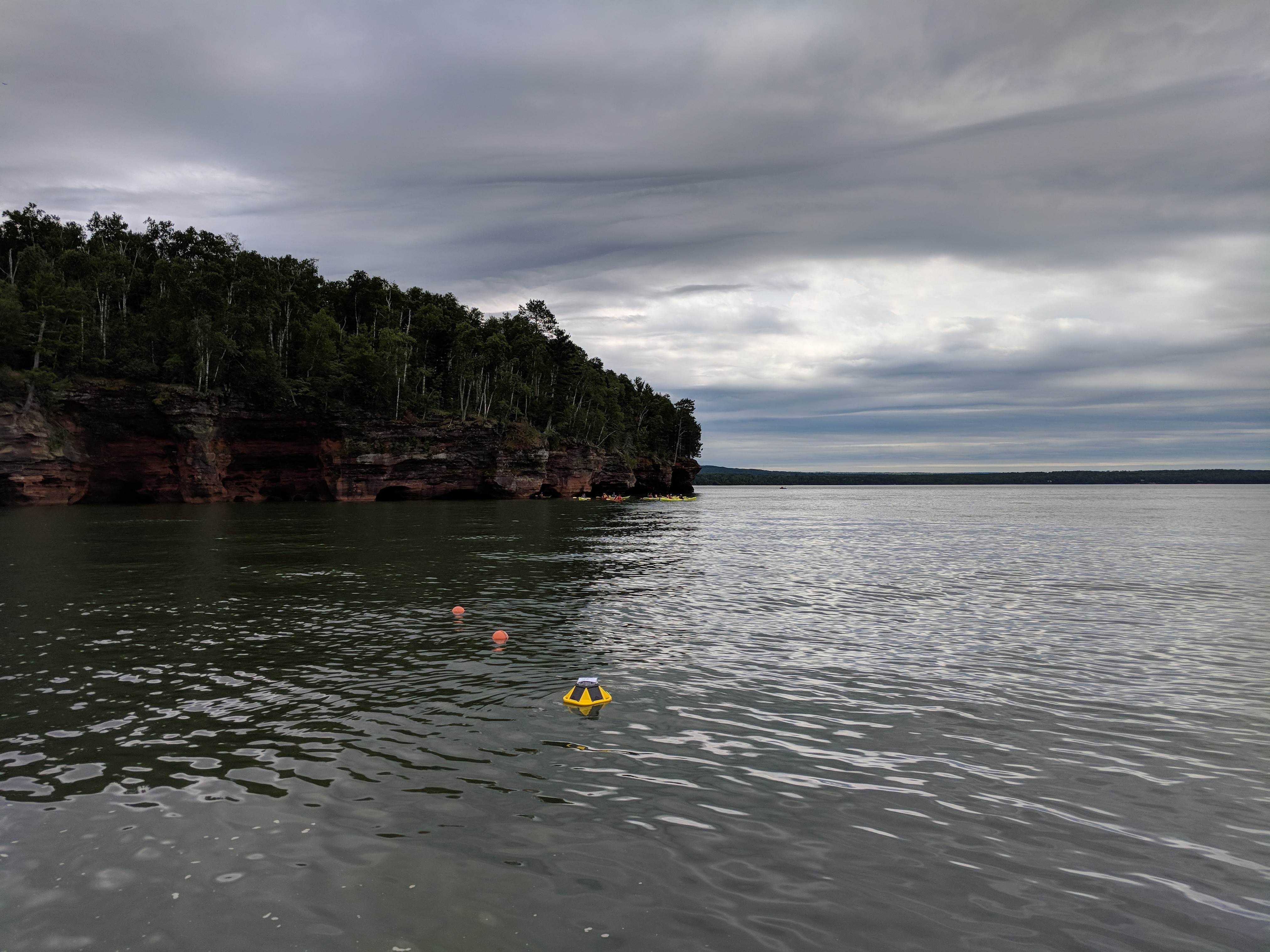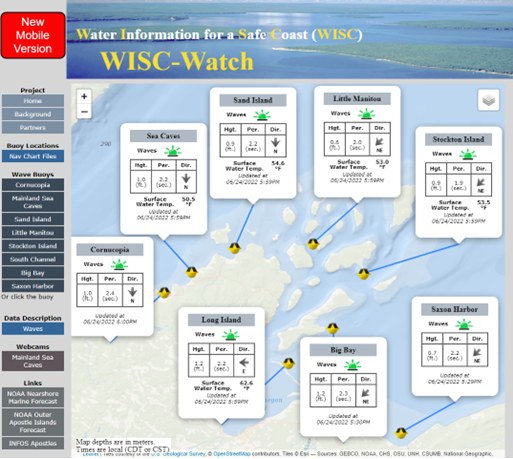Background
Water conditions around the Apostle Islands National Lakeshore (AINL), Lake Superior, vary dramatically due to sheltering effects, rapidly changing winds from fast-moving storms, and reflection from steep cliffs (Fig. 1). Wave conditions are generally most sheltered near the mainland (where boaters launch) and increase in intensity toward the open waters of Lake Superior, which may cause boaters to underestimate wave conditions. Recent boating accidents are an unpleasant reminder of the potential dangers [CBS News, 9/3/2018, Father, three children killed, mother survives; NYPost, 5/2/2020, Person missing after boat capsizes off Long Island].
With the goal of improving boater awareness and safety, we have developed Water Information for a Safe Coast (WISC)-Watch to provide real-time wave and water temperature conditions around the AINL. WISC-Watch is a network of SOFAR Spotter buoys (see Fig. 2 below) that have been strategically placed at many of the most popular boating destinations. Public outreach efforts are ongoing to promote the use of the real-time data.

Fig. 1 Dangerous waves near the Mainland Sea Caves.
This project was initiated as a joint effort between many partners and collaborators. Funding was initially provided by the Wisconsin Coastal Management Program, UW-Sea Grant, and Professor Chin Wu of UW-Madison. Today, the system is funded by the Friends of the Apostle Islands with in-kind support from the Apostle Islands National Lakeshore (AINL) to deploy and maintain the buoys. Technical computing is performed by Josh Anderson and Professor Chin Wu at UW-Madison.

Fig. 2 SOFAR Spotter wave buoy deployed at the Mainland Sea Caves.
WISC-Watch is constantly evolving as scientific and public data are gathered and analyzed. Below (Fig. 3) is a map of the original layout of WISC-Watch buoys in 2021, which differs slightly from the 2022 configuration (Fig. 4). Adjustments to buoy locations are made for many reasons, but one important factor is user feedback. So, please feel free to offer suggestions!

Fig. 3 Original 2021 WISC-Watch homepage.

Fig. 4 2022 WISC-Watch homepage.